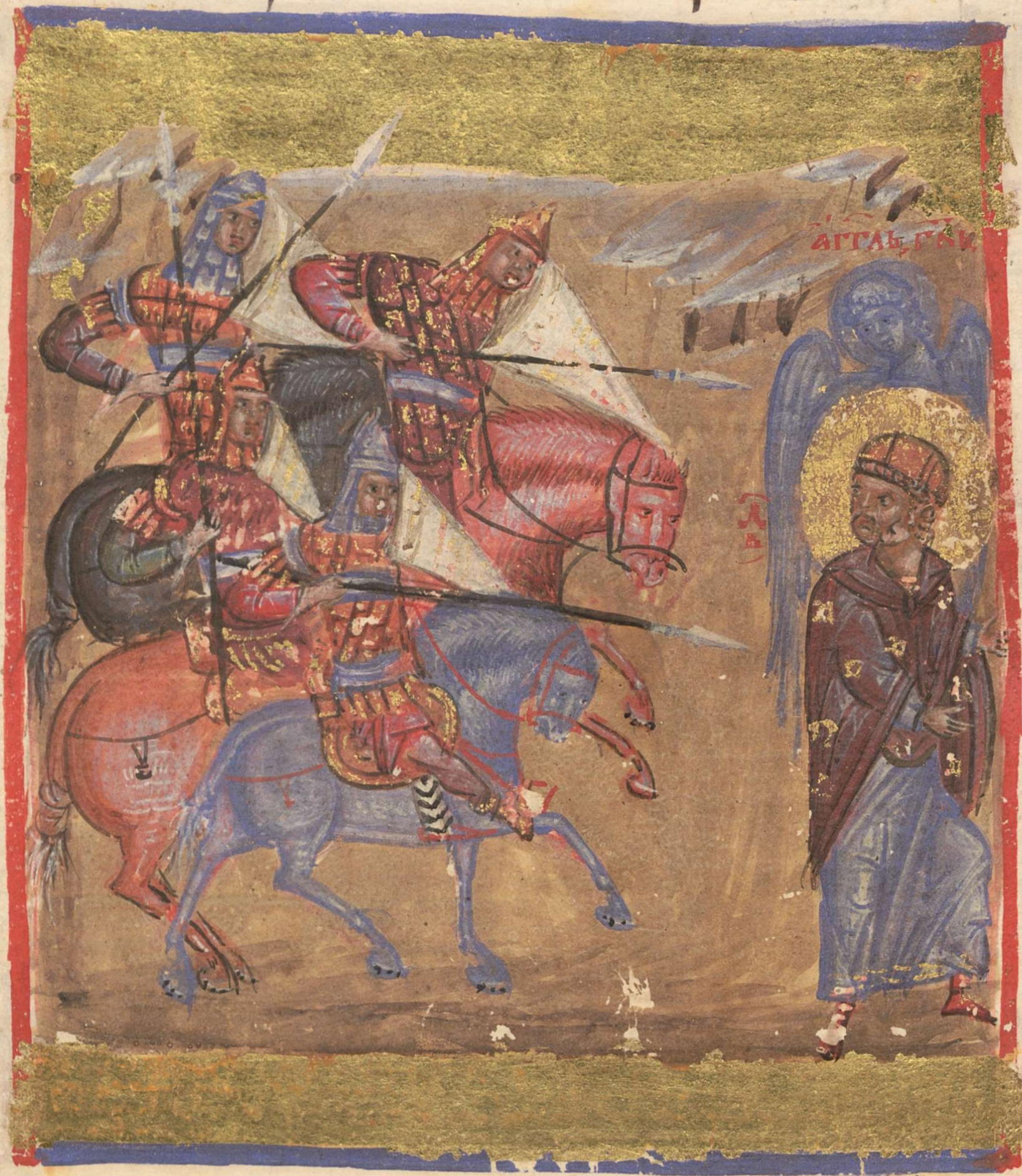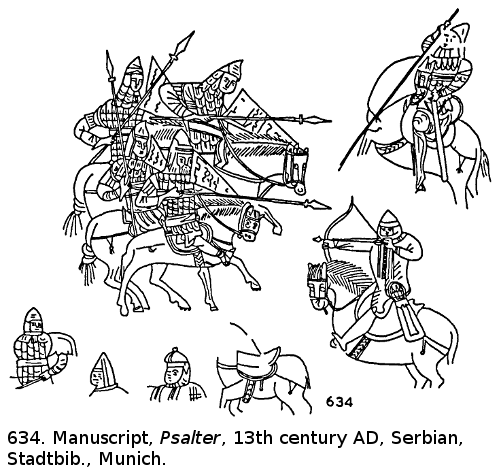Serbian Psalter, end of 14th century. Bayerische Staatsbibliothek Cod.slav. 4.

The Serbian Psalter is regarded as the main work of book illumination from medieval Serbia. It represents a singular relic of a Serbian culture which was defined by orthodoxy and Byzantine educational tradition, at a time at which this culture was jeopardized by the expansion of the Ottoman Empire.
It is assumed that the manuscript was crafted for the Serbian Prince Lazar, who met his death in the Battle of Kosovo against the Turks in 1389, or for his son Stefan Lazarevic († 1427). In the 15th century the manuscript belonged to the Serbian princely family Brankovic, in the 17th century to the monastery Pribina Glava in the region of Fruška Gora (Syrmia). In the course of the Turk wars, it was acquired by Wolfgang Heinrich von Gemell zu Fischbach, who gave the codex as a present to the monastery of Gotteszell in Lower Bavaria in 1689, from where it was brought to St. Emmeram in Regensburg in 1782 and came to Munich in 1810 in the course of the secularisation.
Serbian Psalter, end of 14th century (Cod.slav. 4)
Source: Bayerische Staatsbibliothek

Referenced as figure 634 in The military technology of classical Islam by D Nicolle
634. Manuscript, Psalter, 13th century AD, Serbian, Stadtbib., Munich.
See also a Fresco of Saint Demetrios from Dečani church, Monastery St. Theodore Tiro (Tyro), Visoki Dečani, Serbia
and Fresco of a warrior saint from the north choir of the Dečani church nave, Monastery St. Theodore Tiro (Tyro), Visoki Dečani, Serbia, 14th century.
Fresco of the White Angel and Sleeping Guards at the Sepulchre in Mileševa Monastery, Serbia, c.1240.
Other 14th Century Illustrations of Costume and Soldiers

